Strigolactone interactions with other phytohormones (Review)

Annals of Botany 124: 749–767, 2019
doi: 10.1093/aob/mcz100
Strigolactones, a group of sesquiterpene lactones, are carotenoid-derived plant hormones with diverse developmental functions in plants. Their hormonal activities largely involve the integration of ambient and endogenous cues and a direct or indirect modulation of the actions of other phytohormones. In this review, Omoarelojie et al. draw from extant experimental data to provide current valid conclusions on the intricate nature of strigolactone crosstalk with other phytohormones as well as their downstream signal networks. While exploring the nexus of hormonal crosstalk and gaps in knowledge, they discuss exciting perspectives for research on molecular events that underlie synergistic and antagonistic hormonal interactions.
Authors: L. O. Omoarelojie, M. G. Kulkarni, J. F. Finnie, and J. Van Staden
Plant speciation in the age of climate change (Viewpoint)
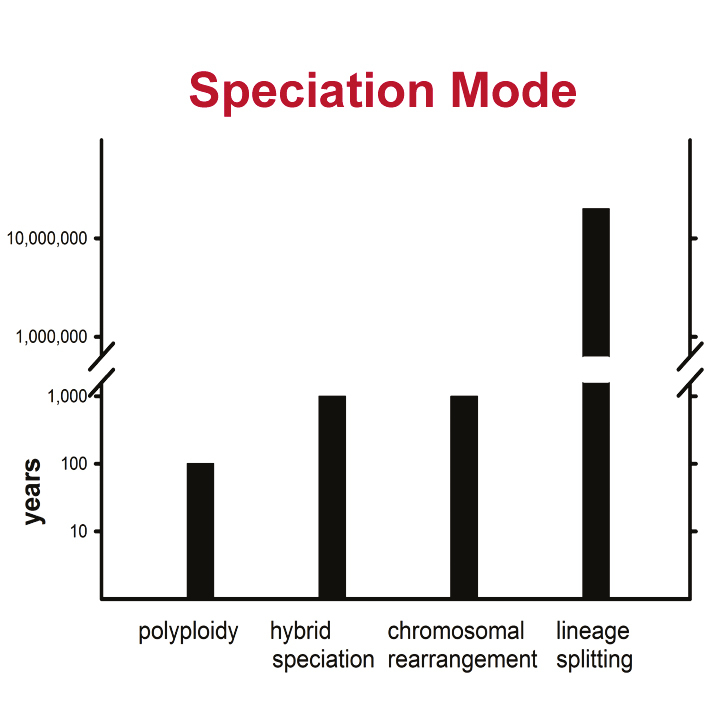
Annals of Botany 124: 769–775, 2019
doi: 10.1093/aob/mcz108
Many predictions have been made about the impact of climate change upon species extinction in the next several centuries, but little has been said about species formation during that period. Levin presents four modes of speciation: lineage divergence, chromosomal rearrangement, polyploidy, and stabilization of homoploid hybrids. He argues that there will be great disparities in the importance of these speciation modes. Speciation via polyploidy almost certainly will prevail because ploidal change is common, and expanding lineages may be present within a few decades of their inception. Speciation via chromosomal rearrangement and hybrid stabilization are very low probability events, which could occur within a hundred years. Speciation via lineage splitting is the least likely because it takes hundreds of thousands to millions of years. Given the speed of polyploidy and the apparent advantages of polyploids in changing environments, the percentage of polyploid flowering-plant species is apt to increase from about 35% to well over 50% in the next several centuries.
Authors: Donald A. Levin
For a Commentary on this article see this issue, pp.iv–v.
Low root investment in temperate lianas
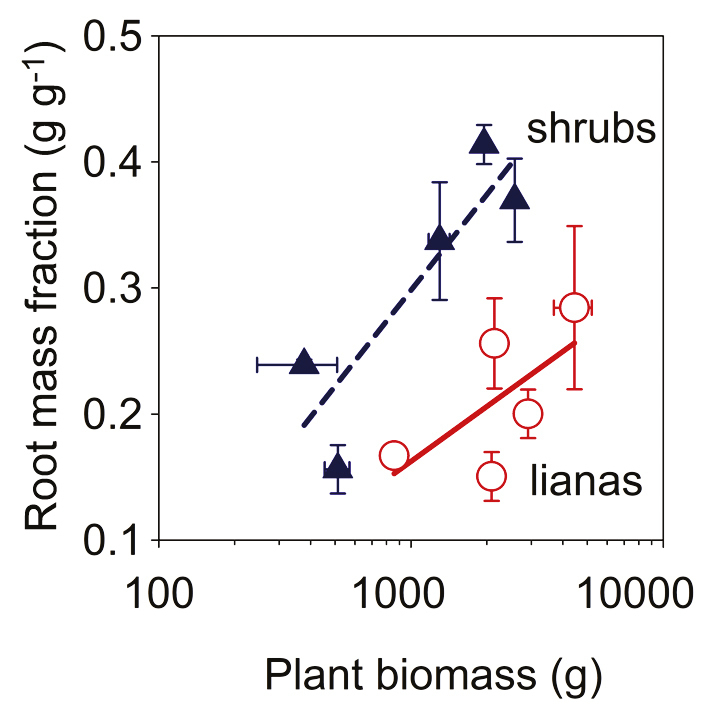
Annals of Botany 124: 777–790, 2019
doi: 10.1093/aob/mcz061
Lianas are woody climbing plants that use stems of other plants for support. Evolutionary advantages of lianas over self-supporting plants may result from their decreased requirement for supporting organs. To assess biomass investment among leaves, stems, and roots, Wyka et al. grew a set of temperate lianas and, for comparison, shrubs, in large outdoor containers. Although the experiment revealed a variety of individual species investment patterns, there was a clear prevalence of reduction in liana root biomass, suggesting that lianas need less anchoring in soil than self-supporting plants. This result indicates the importance of considering underground investment in reconstructing evolution of the different growth forms.
Authors: Tomasz P. Wyka, Marcin Zadworny, Joanna Mucha, Roma Żytkowiak, Kinga Nowak, and Jacek Oleksyn
Evolution of plastid and mitochondrial genomes in non-photosynthetic Epirixanthes

Annals of Botany 124: 791–808, 2019
doi: 10.1093/aob/mcz114
Many parasitic and mycoheterotrophic plants have lost photosynthesys. The plastid genome, which normally includes a suite of genes involved in photosynthesis, is known to be strongly modified in such plants. The inconspicuous, mycoheterotrophic species of the genus Epirixanthes (Polygalaceae) are no exception. Based on next-generation sequencing data, Petersen et al. describe that the whole plastid genomes have been greatly reduced in size and which genes have been lost. However, other parts of the plastid genomes are duplicated up to four times, suggesting unique structural changes. In contrast, the mitochondrial genome is fairly normal, although the structure is complicated and the genome imported larger parts of plastid DNA at a time before it was lost from the plastid genome.
Authors: G. Petersen, H. Darby, V.K.Y. Lam, H.Æ. Pedersen, V.S.F.T. Merckx, A. Zervas, O. Seberg, and S.W. Graham
Flower height along the shoot axis affects fitness of bat-pollinated species

Annals of Botany 124: 809–818, 2019
doi: 10.1093/aob/mcz116
Bat-pollination is understudied, and the role of certain plant traits in the interaction with bats remains elusive, such as floral height along the shoot axis. Diniz et al. assess its effect on bat-visiting rates and seed set of Crescentia cujete (Bignoniaceae) and seven other bat-pollinated species in northeastern Brazil. Floral height has a positive effect on the fitness of low-statured plants or subsets of lower flowers, suggesting that proximity to the ground or surrounding vegetation deters bat visitation. Thus an unexplored trait has implications for the morphological evolution of bat-pollinated plants in function of ecologically complex pollinators.
Authors: Ugo M. Diniz, Arthur Domingos-Melo, and Isabel Cristina Machado
Herbivory may promote a non-native plant invasion only at low latitude
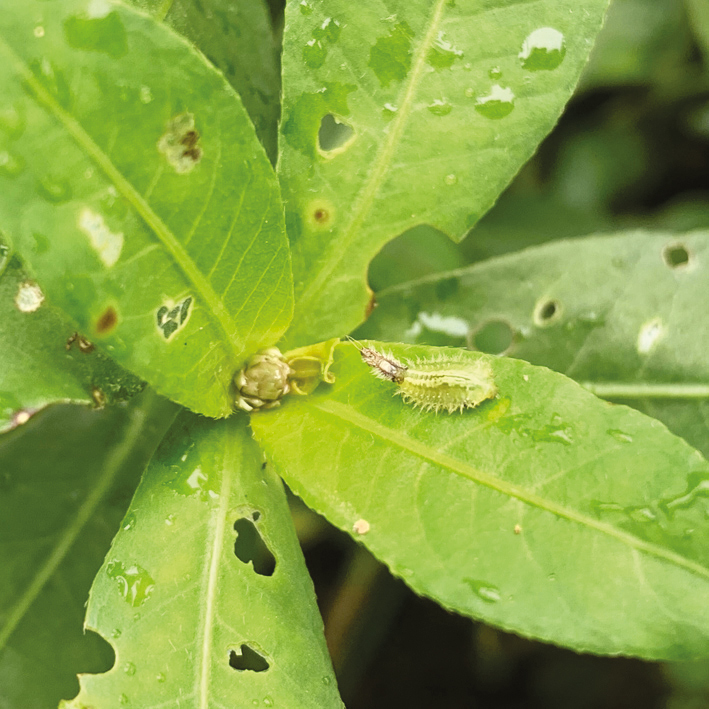
Annals of Botany 124: 819–827, 2019
doi: 10.1093/aob/mcz121
Herbivory that confers competitive advantages to non-native plants over native plants is widely believed to promote plant invasions. By conducting an experiment in common gardens and field surveys along latitudes in China, Lu et al. tested the role of herbivory in Alternanthera philoxeroides (Amaranthaceae) invasion. In the experiment, herbivory suppressed the native congeneric plant, A. sessilis, and conferred a competitive advantage to the invasive plant at low latitude, with no impact on their competition at higher latitudes. But in the field, A. philoxeroides invasiveness peaked in middle latitude. These results suggest that the key factors promoting plant invasions might change with latitude.
Authors: Xinmin Lu, Minyan He, Saichun Tang, Yuqing Wu, Xu Shao, Hui Wei, Evan Siemann, and Jianqing Ding
Hemiepiphytism, adaptation and an evolutionary bridge in the fern Hymenaspleniums

Annals of Botany 124: 829–835, 2019
doi: 10.1093/aob/mcz124
Plants classified as hemi-epiphytes represent a rare and unusual growth form that exist in the realm between a purely terrestrial and purely epiphytic life style. These plants spend some part of their life disconnected from terrestrial soil and must have adaptations to both epiphytic and terrestrial environments. The complexities of maintaining such a diverse array of adaptations maybe one of the reasons that this life form is so uncommon. To date, only a few fern species have been accurately described as hemi-epiphytes. Watts et al. use extensive field documentation of Hymenasplenium volubile to show that it is a hemi-epiphyte, the first report of hemiepiphytism in the large, cosmopolitan family: Aspleniaceae. In the species, the gametophytes start life as true epiphytes. The rare occurrence and complex growth habit of hemi-epiphytic ferns makes them valuable study species to advance our understanding of the evolution of epiphytism.
Authors: Jacob Watts, Robbin C. Moran, and James E. Watkins, Jr.
X-ray CT scanning can boost tree-ring research
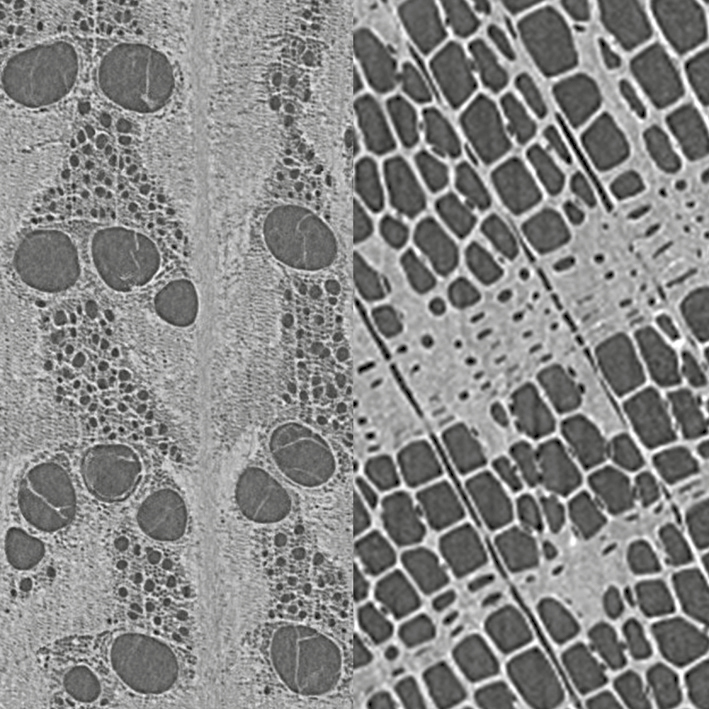
Annals of Botany 124: 837–847, 2019
doi: 10.1093/aob/mcz126
Tree rings, as archives of the past and biosensors of the present, offer unique opportunities to study influences of the fluctuating environment over decades to centuries, yet large amounts of data are needed. Van den Bulcke et al. show that advanced multiscale X-ray computed tomography (CT) scanning is one of the few techniques that can deliver such datasets. X-ray CT volumes are also well suited for automated pipelines with neural-based learning for image processing. Advanced X-ray CT scanning generates pith-to-bark ring width series, density profiles, and wood trait data. With sufficient global coverage, this contributes to large-scale monitoring and modelling efforts.
Authors: Jan Van den Bulcke, Marijn A. Boone, Jelle Dhaene, Denis Van Loo, Luc Van Hoorebeke, Matthieu N. Boone, Francis Wyffels, Hans Beeckman, Joris Van Acker, and Tom De Mil
Reproductive and genetic consequences of peripherality in Salix herbacea
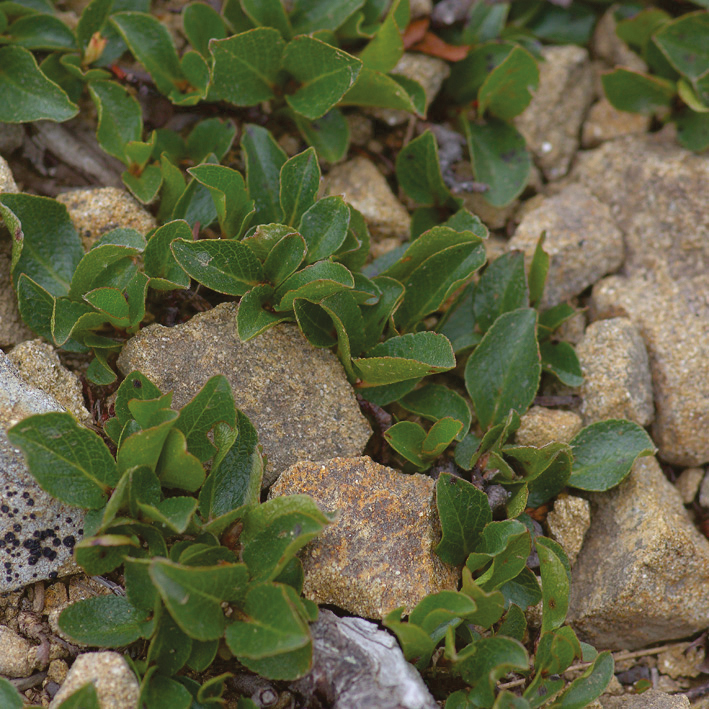
Annals of Botany 124: 849–860, 2019
doi: 10.1093/aob/mcz129
Extreme isolation and small population size can greatly impact the genetic structure of peripheral plant populations. Carbognani et al. assessed such modifications in rear-edge populations of an artic-alpine species with dual reproductive modes by a whole-population genetic characterization of the only two Salix herbacea (Salicaceae) populations in the northern Apennines (Italy). Although the larger peripheral population still maintains levels of sexual reproduction enough to counteract a dramatic loss of genetic and clonal diversity, the current conditions of the smaller one are critical, with extremely simplified reproductive dynamics and depleted genetic diversity.
Authors: M. Carbognani, A. Piotti, S. Leonardi, L. Pasini, I. Spanu, G.G.Vendramin, M. Tomaselli, and A. Petraglia
Functional niche occupation along gradients of stress and disturbance
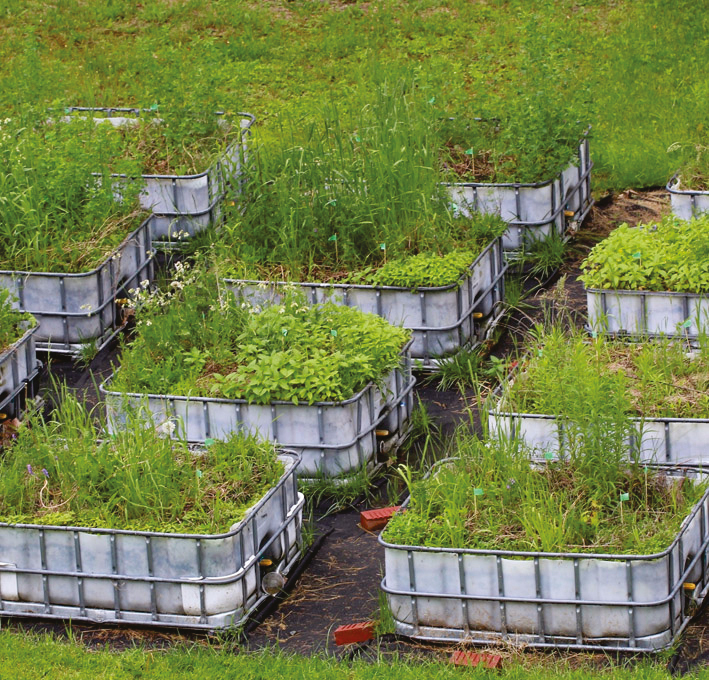
Annals of Botany 124: 861–867, 2019
doi: 10.1093/aob/mcz140
Studies of functional niche occupation have rarely considered intraspecific trait variation and linked this to environmental gradients. Li and Shipley explore this using an experimental system consisting of 24 herbaceous plant mesocosms along experimental gradients of stress and disturbance. Going from species-poor to species-rich mesocosms, communities occupied a larger total functional niche volume. The amount of functional niche overlap increased, while the average functional niche volume did not change significantly. These patterns of functional niche occupation were jointly driven by habitat filtering and limiting similarity but the strength of these processes did not vary significantly at different levels of stress and disturbance.
Authors: Yuanzhi Li and Bill Shipley
Fitness costs of delayed pollination
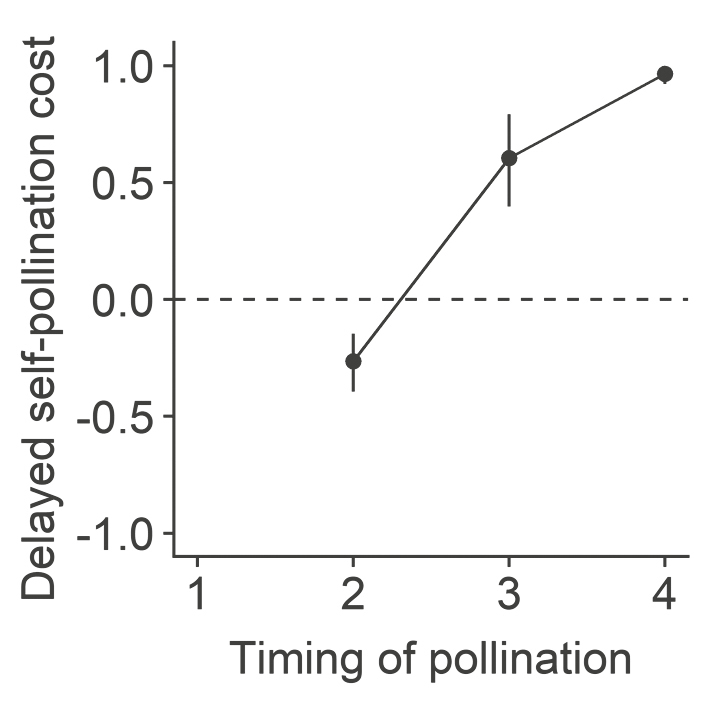
Annals of Botany 124: 869–881, 2019
doi: 10.1093/aob/mcz141
When pollinators are unreliable, plants may ensure reproduction via delayed self-pollination. To predict the evolutionary consequences of pollinator declines, we need to understand the costs of this mechanism. Using Dalechampia scandens (Euphorbiaceae), Hildesheim et al. studied floral morphology and development in association with delayed pollination. They then estimated separately the cost of delayed self-pollination due to increased levels of self-pollination and ageing flowers on plant fitness. Unpollinated blossoms increased their longevity to allow for delayed pollination, but seed number and quality decreased with the delay. Inbreeding affected plant fitness to a lesser extent. Hence, the cost of delayed self-pollination increased with the delay of pollination. Plants may evolve earlier self-pollination to ensure reproduction and simultaneously avoid the effect of ageing flowers.
Authors: Laura S. Hildesheim, Øystein H. Opedal, W.Scott Armbruster, and Christophe Pélabon


